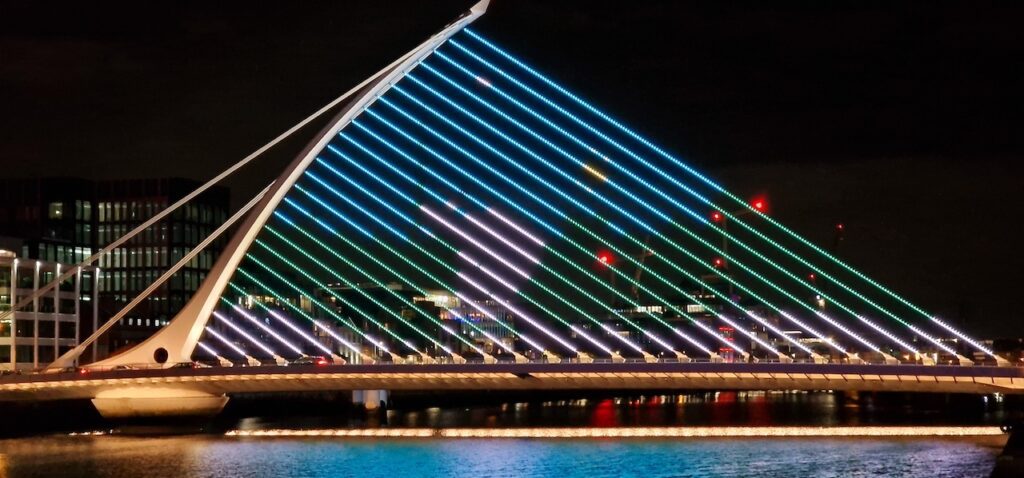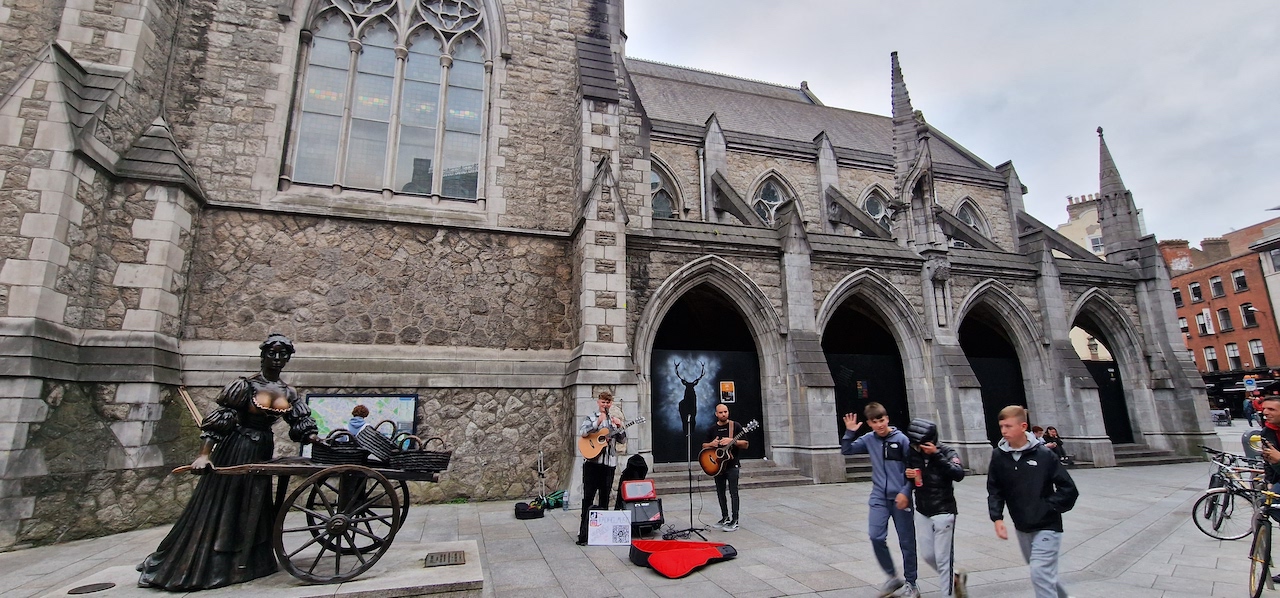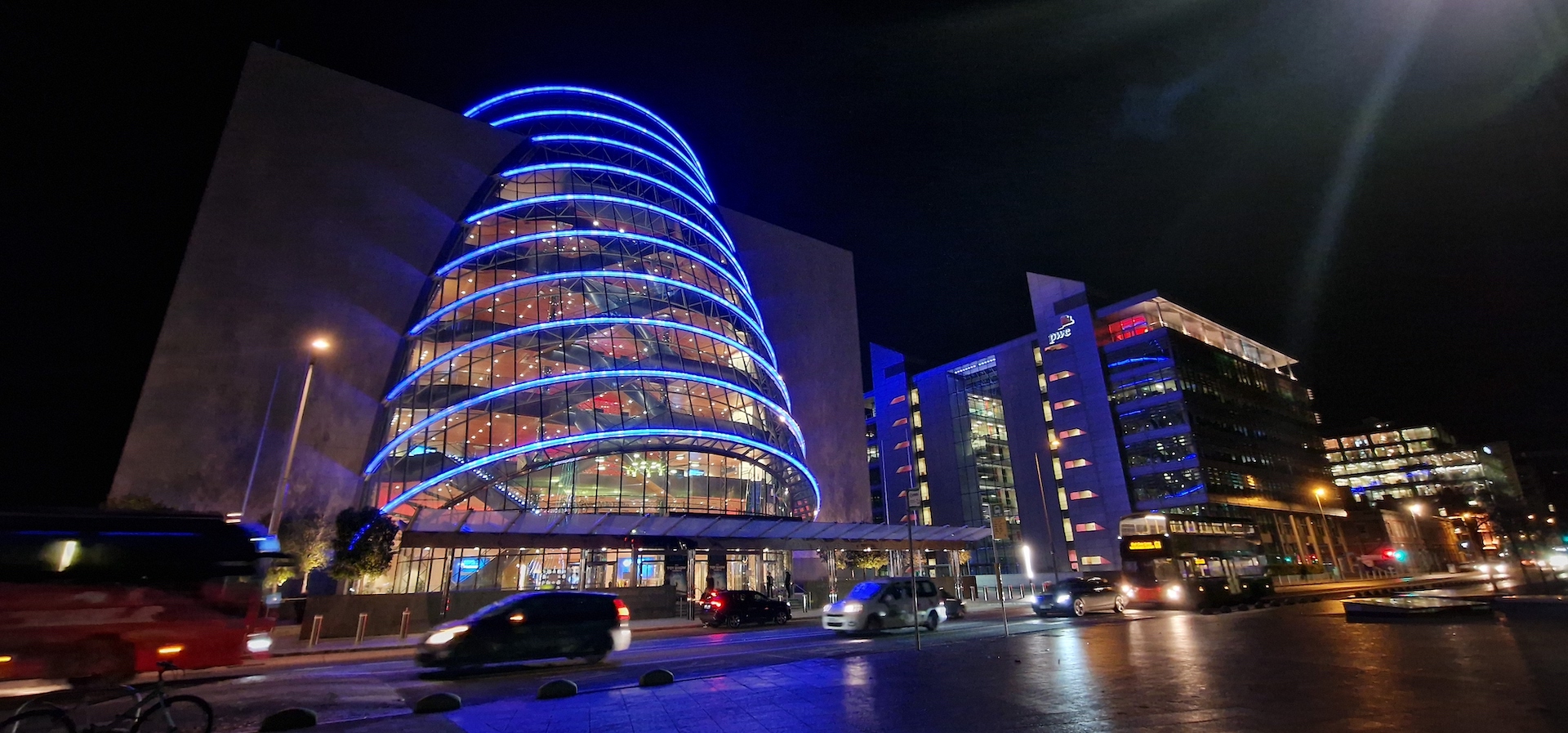
The Samuel Beckett Bridge is located in Dublin City, spanning the River Liffey between Sir John Rogerson’s Quay and Guild Street. It was designed by the world-renowned Spanish architect Santiago Calatrava and completed in 2009. The bridge was named after the Irish Nobel Prize-winning author Samuel Beckett, who was born in Dublin.

The Samuel Beckett Bridge is a cable-stayed bridge, which means that its deck is supported by cables that are attached to a single tower. The bridge’s striking design features a sweeping cable-stayed deck that resembles a harp, one of Ireland’s most recognizable symbols. The harp is also a nod to the country’s rich musical heritage, as the bridge serves as an important link to Dublin’s Docklands, which was once a hub of industrial activity and now is a thriving cultural and business district.
The Samuel Beckett Bridge is also notable for its engineering feats. The bridge can rotate 90 degrees on its axis to allow large ships to pass through the River Liffey. The rotating mechanism is powered by two hydraulic motors, and the bridge’s pivot weighs over 1,000 tons.
The Samuel Beckett Bridge has quickly become one of Dublin’s most iconic landmarks and a popular destination for tourists and locals alike. Its striking design and engineering feats have earned it several awards and accolades, including the Institution of Structural Engineers Supreme Award for Structural Engineering Excellence in 2010
The Bridge was named after the famous Irish writer, Samuel Beckett. Beckett was born in Dublin in 1906 and is widely regarded as one of the most important writers of the 20th century. He is best known for his works of absurdist fiction, including the novel “Molloy” and the play “Waiting for Godot.”
Beckett’s writing is celebrated for its inventive use of language, its exploration of human consciousness, and its themes of alienation and existentialism. He received numerous literary awards during his lifetime, including the Nobel Prize in Literature in 1969.
The decision to name the bridge after Samuel Beckett was made in recognition of his contributions to Irish literature and culture. The bridge serves as an important landmark in Dublin City and is a fitting tribute to one of the city’s most famous sons.

